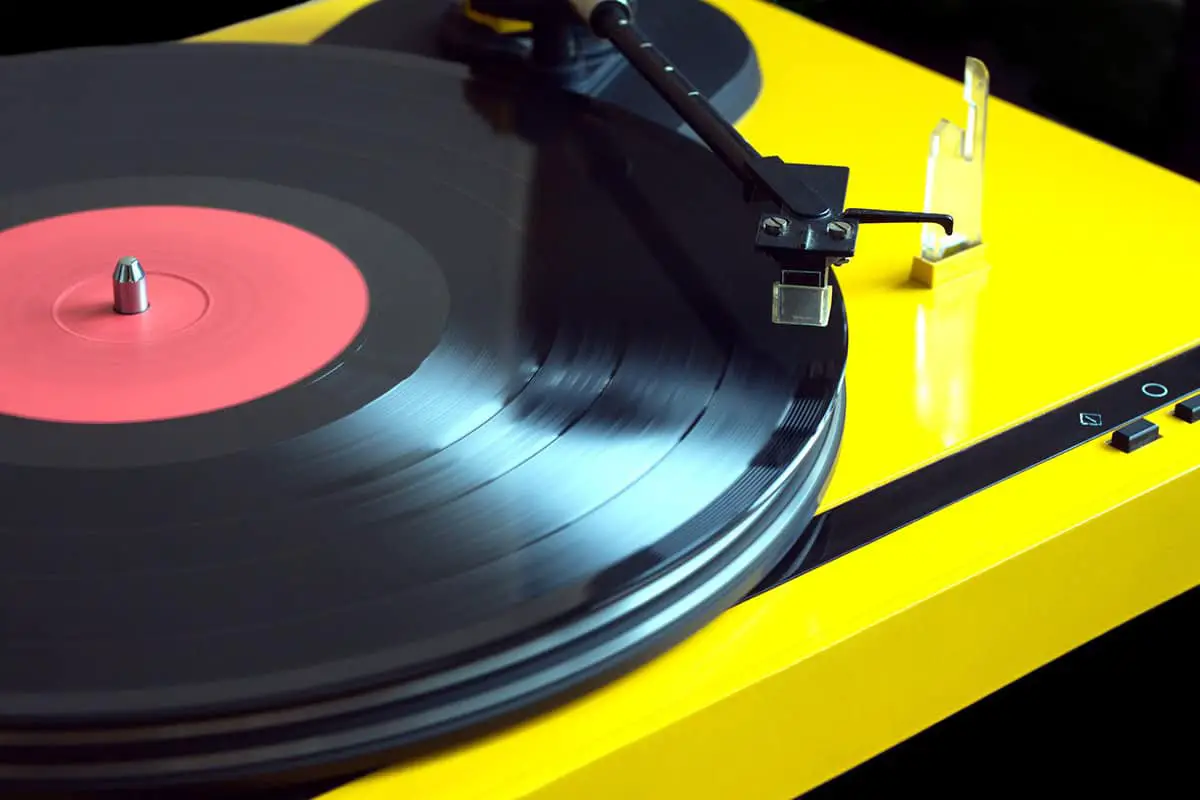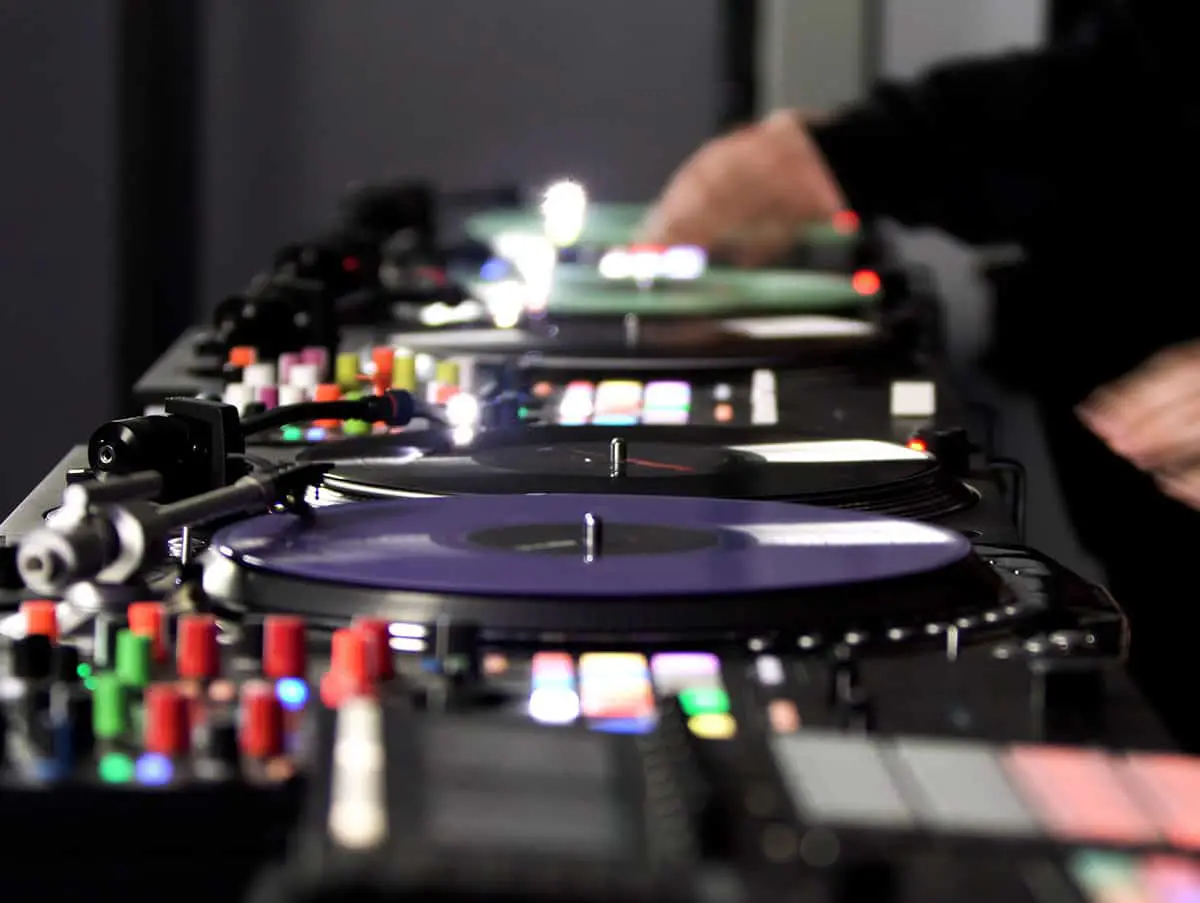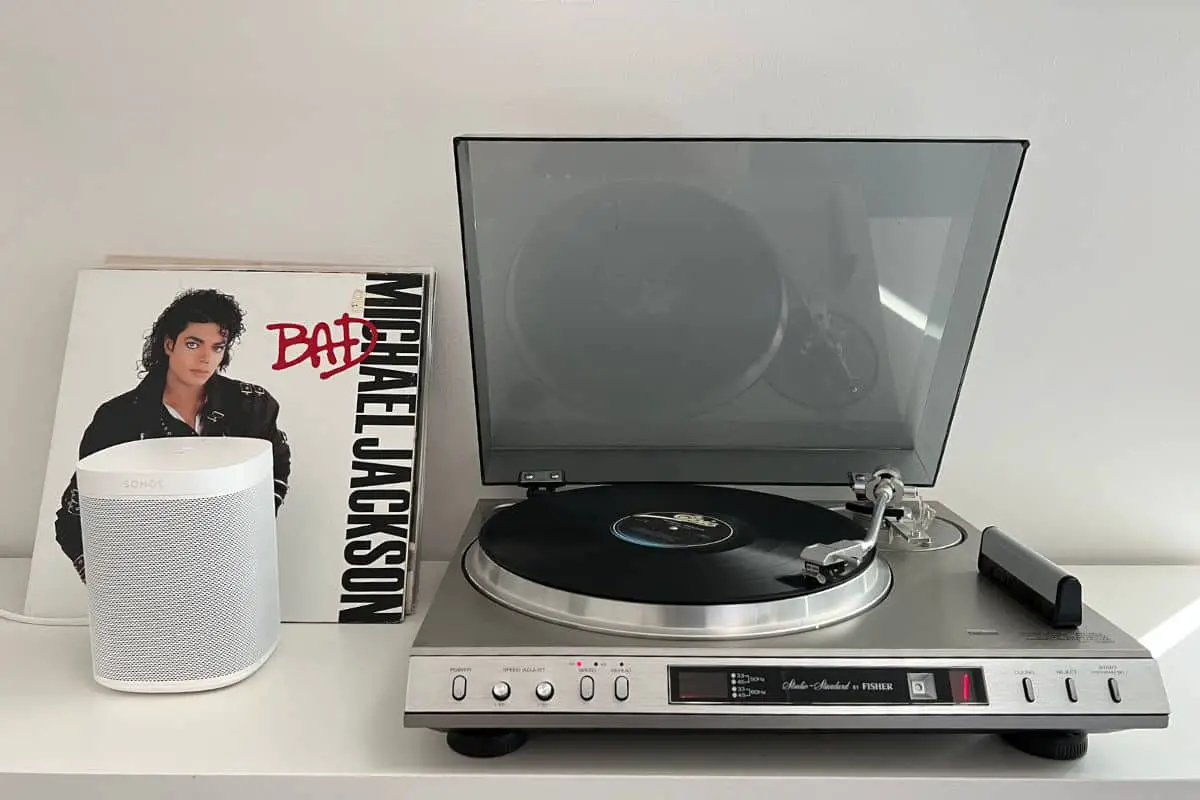This post contains affiliate links.
Most people prefer to do a complete setup for their turntables receiver and all. However, what if you don’t have a receiver? How do you ground your turntable without one? We’ve created a complete guide to help you ground your turntable without a receiver.
In a setup that has a receiver, the receiver houses the amp. However, if you get rid of the receiver, you’ll lose your amplifier as well. It means you’ll need to get an external amplifier, preamp (if your turntable doesn’t have one), and speakers.
It doesn’t matter if you’re a newbie or an oldie in the vinyl world; grounding your turntable is one decision that would always turn out great when it comes to turntables.
Why wait till your record player starts to emit a humming sound when you can prevent that all along?
Grounding problems in a turntable is not uncommon and can be very annoying. For most turntable users, it is an essential factor that comes into play, especially before choosing which brand and model to purchase.
This unexpected but common phenomenon, called a ground loop, happens when all the different chassis connections in many or other pieces of audio equipment are not at the same voltage or ground potential.
An example of this is how your turntable needs to be grounded correctly and adequately to an amplifier to prevent unwanted noise or sound distortions. (Source)
Table of Contents
What Materials Do You Need for the Grounding Process?
It doesn’t require much learning to ground your turntable successfully. You may be lucky to own a turntable that is already pre-fitted with all you need for the grounding process.
Getting extra materials to complete the process is also pretty easy if you own a turntable that isn’t pre-fitted. What materials do you need to ground your turntable efficiently?
A Grounding Wire
This ground wire goes into the external amplifier
for turntables that already have a ground wire.
If there is no ground wire on your turntable, you will need to purchase an insulated wire about 18-20 inches long.
A Grounding Terminal
The ground wire on the turntable must be attached to the grounding terminal on the external amplifier. If your turntable does not have a grounding terminal, there is a method to bypass this.
For this method, you will need a pair of needle-nose pliers; this will be helpful to position, hold the wire in place, and cut the wire you need to ground the turntable.
You will also need some gaffer tape. This tape is going to help create a grounding terminal for the turntable.
How Do You Ground A Turntable Without A Receiver?
When it comes to effectively grounding your turntable, a six-step method works well, regardless of if you’re a beginner, and this is your first attempt.
The First Step: Turn Off The Power
The first step before you proceed to ground your turntable is to turn off the power. Remember you’re dealing with two different equipment, so shut down the power for the amplifier too.
The purpose is to prevent unwanted or unexpected electrical shocks. It also eliminates harmful or damaging noise from the speakers during the connection.
The Second Step: Find The Turntable’s Grounding Wire
To successfully ground a turntable, you need to identify and differentiate its wires, and the same goes for all other external audio equipment connected to the turntable.
These wires are commonly connected under the metal turntable chassis and always have an unconnected copper spade with the connector.
When considering most of the modern turntable models available on the market, it is safe to say the turntable’s wire is commonly green. It, however, does not mean your turntable’s wire will not have a different color.
If your turntable is new, this wire is most likely under the chassis, folded and covered with a twist tie. To access the turntable’s ground wire, you will need to uncover this wrapping.
The Third Step: Locating The Grounding Terminal On The Amplifier
Depending on the turntable brand and model, you can find the grounding terminal on an amplifier behind the turntable.
You know you have the right spot when you see it is marked “ground.” Depending on your turntable’s model, this could be a screw terminal or a metal post with contorted knots. Once you have this, proceed to loosen or disconnect the ground terminal.
The Fourth Step: To Connect The Turntable’s Grounding Wire To The Amplifier’s Ground Terminal
Once completed with loosening the ground terminal on the amplifier, you need to ensure that the ground wire from the turntable gets connected to the marked ground terminal on the amplifier. Try to keep both pieces of equipment close to each other. It is to ensure the connection stays in ace without any issue.
The Fifth Step: Drop The Ground Wire With The Spade Connector To The Grounding Terminal
If and after moving your equipment, you should use the spade connector to lower the ground wire to the grounding terminal.
Once complete, you can then tighten the connection paying attention not or using too much force on the tightening.
The Sixth Step: Connect And Check
The last and final step to completing this turntable grounding wire process is to turn back on the power. Your turntable is ready to go as soon as the power is back on. The entire process is that simple and easy.
Why Do I Need to Ground My Record Player?
Every vinyl lover wants each music experience to be soothing and pleasurable. A “humming distortion” can surface while playing your record and ruin this experience.
It isn’t easily noticeable for some because the playback on the turntable can easily mask this.
However, this is not the same as others who might find this humming quite annoying.
A faulty turntable does not necessarily cause this distortion. If you set the amplifier tuning to the maximum or when your record is not even playing, it can also occur.
To make sure that every music experience is melodious and soothingly pleasurable, you always have to keep your turntable in peak condition.
One of the best ways to ensure your timetable is optimal at all times is to ground the turntable. Most turntables require grounding.
The only set excluded from this is those models with a built-in preamp grounding. There are two main reasons why you should ground your turntable:
To Eliminate Ground Loop
It is not uncommon for turntable users to experience a ground loop. As previously explained, this occurs when different chassis connections in many or other pieces of audio players are not at the same voltage or ground potential. (Source)
Just as with your regular electrical appliances, the metal casing on your turntable can come in contact with a live wire.
This metal casing will naturally conduct and pass the electric current received and disrupt the voltage or ground potential. It is what causes the hum.
To Ensure Your Record Player’s Safety
It is one thing having to deal with the annoying humming that can occur if a turntable is not grounded. Another risk to not grounding a turntable is an electric shock while using the turntable.
Grounding a turntable ensures that any excess or unwanted electrical current directs away from the turntable.
It subsequently protects you from the risk of electric shock, protects your turntable from getting blown up or, worse, also your electrical connections and home from electrical surges or further unwanted damages.
How Do I Know When My Record Player Requires Grounding?

It is not uncommon for vinyl newbies or even old record lovers who have just bought a new turntable to make adjustments.
You don’t learn everything about your turntable immediately, as the knowledge comes with experience. However, you should seriously consider grounding if you start to experience some of these issues.
- Electric shock- if you start to experience electric shock every time your body comes in contact with the metallic parts of your turntable, then it is time to ground your turntable.
- Humming – While this is not easily noticeable if you start to hear a faint hum or screeching sound distortions, then you should immediately proceed to ground your turntable.
How to Assemble a New Turntable Smoothly
If you’re at a loss on how to set up your new turntable, then this section is for you. Once you can successfully set up your turntable, you will better understand the turntable and the turntable’s ground wire.
Step 1: Fastening The Cartridge To The Tone Arm Or The Head Shell
You need to use two screws and nuts for this process, which usually come with the cartridge. The phono cartridge is commonly attached to the cartridge holder.
The cartridge holder is also widely called the headshell and is generally connected directly to the tonearm cartridge.
Then, you proceed to detach the cartridge holder from the tonearm. To do this, move the tonearm lift bar to the bottom of your new turntable.
Before tightening the screws, make sure to put the cartridge in its correct position right in the center before placing it on the cartridge holder.
To prevent damage to the stylus during this process, you should keep the stylus cover on all through this process.
Step 2: Attaching The 4 Wires To The Phono Cartridge
After tightening the phono cartridge to the headshell or the tonearm, you should then attach the four wires on the cartridge headshell to the proper terminals behind the cartridge.
These wires, just like the headshell, are labeled and have different colors. In order to avoid confusion, it is best to consult the manufacturer’s manual for more guidance.
Then you can attach the cartridge holder to the tonearm and slightly tighten it. It gives the cartridge freedom to move back and forth and allows the angle to be adjustable.
Step 3: Stabilizing The Tone Arm and Setting The Tracking Force on the Tonearm
In order to allow the tonearm to float smoothly, the cartridge weight needs to be balanced. To balance your tonearm is pretty straightforward.
The typical balance is around 2.5 to 3 on the dial of most standard machines. However, the real way is to find where the arm balances on the parallel.
The parallel is where the tonearm is parallel to the platter and balanced. Once you lower it, it tends to drop slightly, and that slight drop is what keeps it in the groove of the record without damaging it.
With that in mind, the longevity of your record should get the balance right.
Remember that the needle is delicate, so don’t let it crash down at any time. I like to put a small dry sponge under the needle when I’m balancing it, so when I let it go to see if it’s balanced, it can only fall onto the sponge.
The amount of downward force the needle exerts when touching a record is called the tracking force.
Adjusting the tracking force should be done carefully and precisely. Each cartridge design has a different tracking force specification, and it commonly ranges between 1 and 3 grams. Therefore it is essential to follow the number specified on the tonearm. (Source)
If there is as much as a slight mistake and the tracking weight is set too high, the sound becomes ponderous and dull. If it is set too low, the presentation turns thin, and the cartridge won’t track the groove as required. (Source)
The last adjustment to the tonearm concerns the bias. Bias is known as the sideways force on the cartridge, which balances out the inward pull of the groove. You’ll typically set the bias to the same amount as the tracking weight.
Step 5: Skating-Resistant Control
Some turntables come with an anti-skating handle. This skating-resistant handle compensates for the skating force that moves the tonearm to the center of the turntable when it is spinning.
It also helps the turntable reduce unbalanced pressure on the sides of the groove. The skating-resistant control does not need to be adjusted because it’s completed with the tracking force adjustment.
How To Connect Yоur Nеw Turntable to а Record Player or Audio Equipment
Some turntable models come with built-in speakers, which means you don’t have to purchase any external audio equipment. This feature is particular primarily to the high-end turntables or the best ones.
For turntables that don’t have this feature, here is how to rightly connect the turntable for better sound production.
Under the turntable are colored outputs that you can attach tо thе phono input оn thе bасk оf thе external amplifier. For turntables that don’t have this feature, use the external phono preamp instead. You should also make sure to have completed the grounding process at this point as well.
To avoid placement or input issues, you can use the wireless options. There are Bluetooth turntable models that offer a lot of additional features.
Most Bluetooth turntables also come as automatic, which means you barely have to deal with handling everything manually. A simple button push is all you need to enjoy high-quality sound production.
How to Maintain The Turntable During Use
You have successfully learned how to ground a turntable effectively and how to set up a new turntable, and now it’s time to learn how to care for your turntable accurately. To enjoy the best sound quality, you must keep your turntable in premium condition. Here are a few maintenance tips to help you. (Source)
Clean Your Turntable Periodically
Regular cleaning of your turntable helps avoid damages to some replacement part or the turntable in general. It also makes sure that your turntable is running at all times in premium condition.
There are several cleaning kits available to suit this purpose. You can also use a clean microfiber cloth and some dishwasher liquid in clean water. (Source)
Keep The Needle/Stylus Clean At All Times
It is essential to pay attention to all parts of your turntable while cleaning. One of such vital parts is the stylus. A clean stylus is critical to the quality of sound produced by the turntable. Try using soft anti-static brushes to clean out dust and debris on the needle effectively.
Weather Maintenance
Avoid placing your turntable in places with extreme heat or under direct sunlight. There are instructions on the manual that indicate what kind of weather is most suitable for your turntable and its coating.
Try to keep the turntable away from moist areas or areas prone to water. Be careful not to spill water or other liquid contents on the turntable to avoid damages or electrical shock.
Avoid Using It All The Time
As excited as you are to enjoy your new turntable, try not to overuse it. Avoid using it straight for several hours at once. Also, remember to keep your turntable powered down when it is not in use.
Routine Maintenance Of The Turntable
It is advisable to routinely check your turntable, pay attention to the sound quality and the turntable’s frequency. You can also seek professional help for more advanced maintenance.
Conclusion
Grounding your turntable is a critical step to enjoying a quality experience of the vinyl life. Getting this done is easy with the steps outlined above. This detailed guide will help you avoid common mistakes and bad practices.
Sources
- Davis, Arthur. “Grounding, Shielding, and Isolation.” Journal of the Audio Engineering Society 1, no. 1 (1953): 103-104.
- Definition of ground loop | PCMag Accessed December 23, 2021
- Chris Heinonen, How to Set Up Your Turntable to Sound Its Best | Reviews by Wirecutter, Published August 17, 2021, Accessed December 23, 2021
- Kates, James M. “Low-Frequency Tracking Behavior of Pickup Arm-Cartridge Systems.” Journal of the Audio Engineering Society 24, no. 4 (1976): 258-262.
- Victrola, “Record Player-Care 101,” Victrola, Accessed December 23, 2021, Record Player Care 101 | Victrola
- Libby Plumer “How to set up and maintain your turntable for analogue audio joy,” Wired, Published January 26, 2020, Accessed December 23, 2021, https://www.wired.co.uk/article/how-to-set-up-maintain-turntable-record-player
VacationVinyl.com is a participant in the Amazon Services LLC Associates Program, an affiliate advertising program designed to provide a means for sites to earn advertising fees by advertising and linking to Amazon.com. We also participate in other affiliate programs which compensate us for referring traffic.




